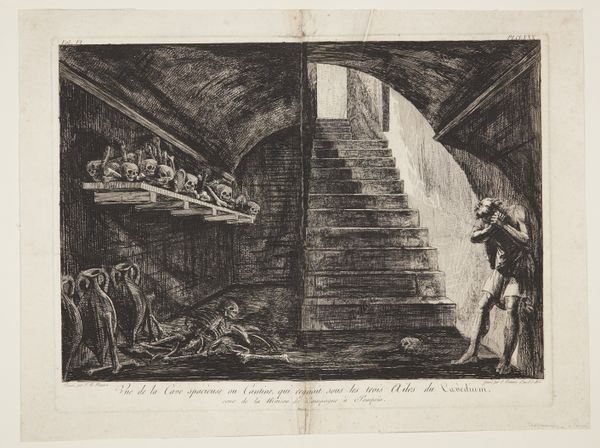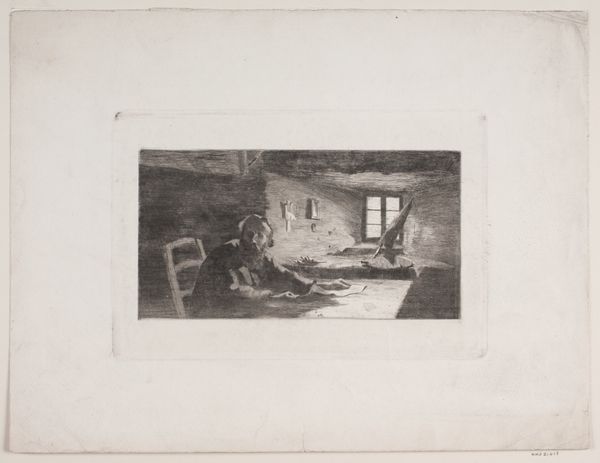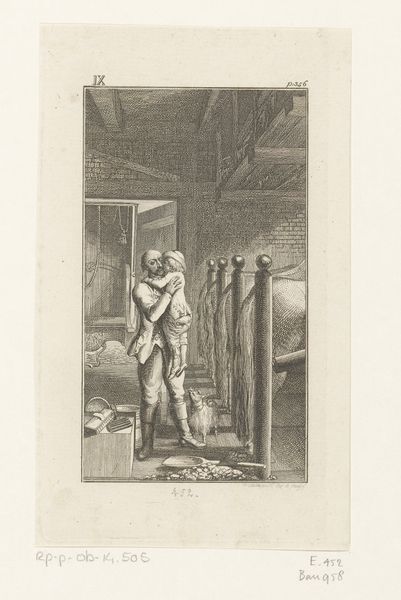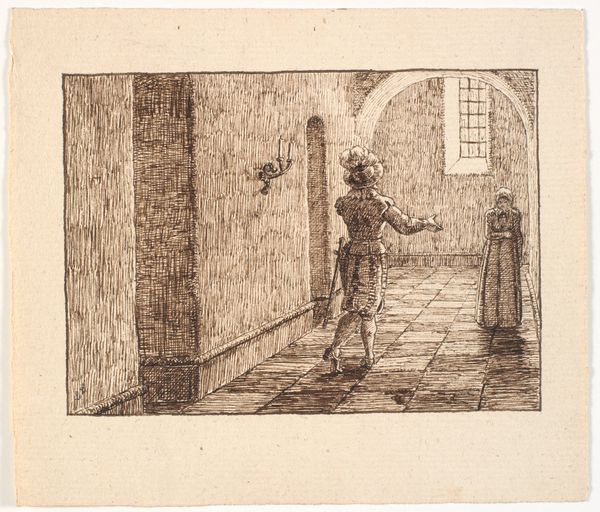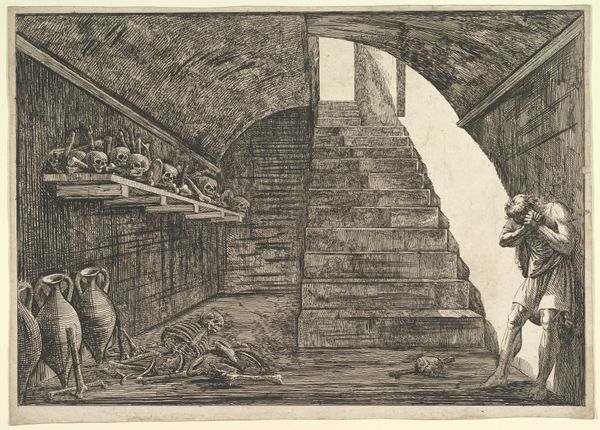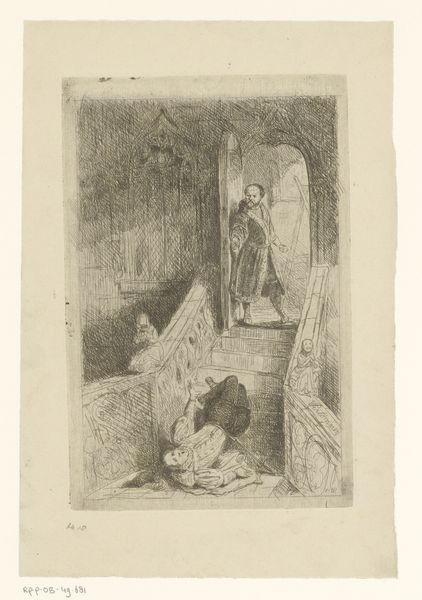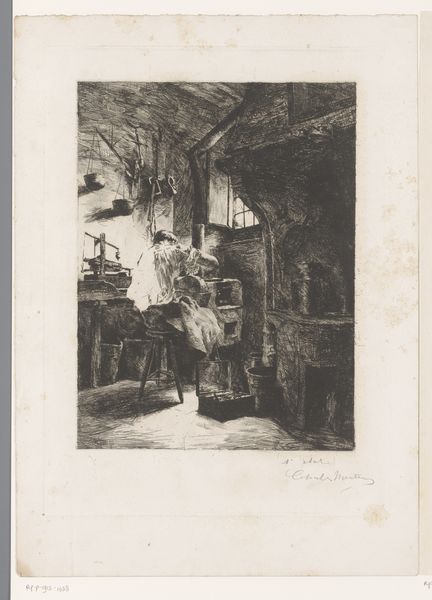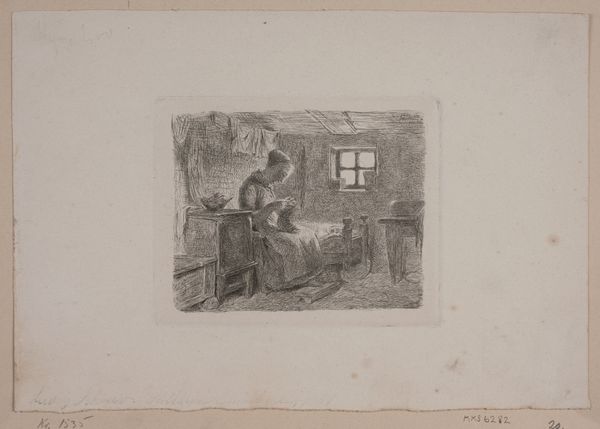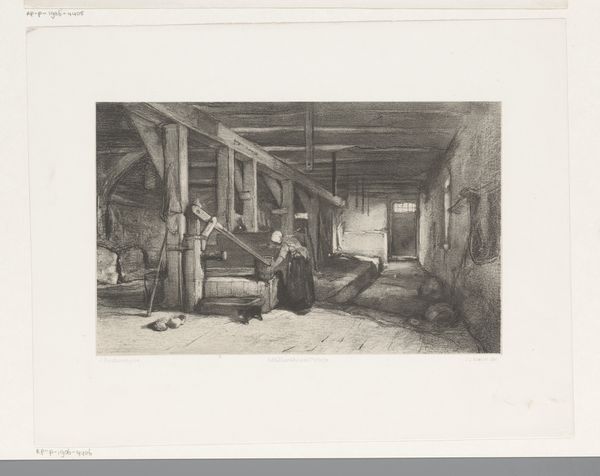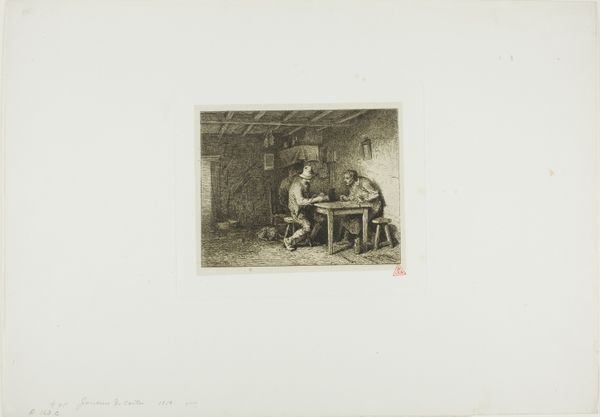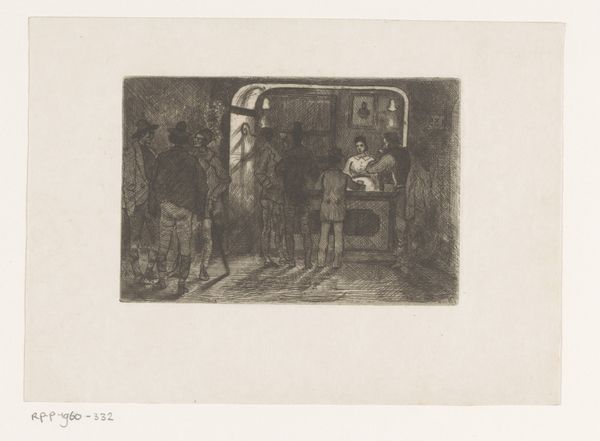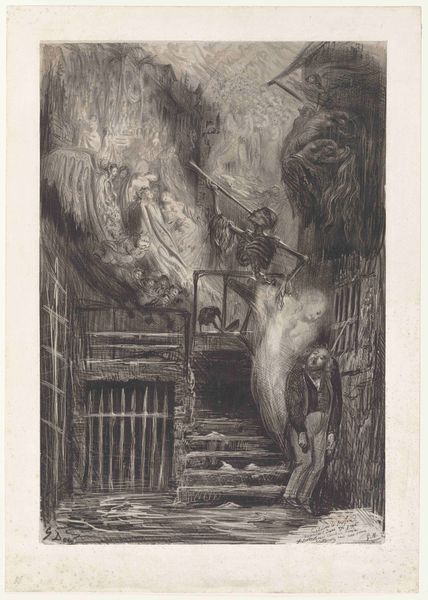
Vue du Laconico, ou bain, et son bassin. que l'on voit dans la maison de Campagne 1805
0:00
0:00
print, engraving
#
neoclacissism
# print
#
landscape
#
ancient-mediterranean
#
line
#
cityscape
#
engraving
Dimensions: 432 mm (height) x 575 mm (width) (plademaal)
Francesco Piranesi etched this view of a "Laconico," or bath, and its basin. Notice the stark, geometric architecture of the bathhouse, a symbol of Roman ingenuity and order. Yet, within this structured space, water—an element of fluidity and transformation—plays a central role. The bathhouse, a place of cleansing and social interaction, echoes in later artistic depictions of communal bathing across cultures. Consider the Turkish bathhouses depicted by Ingres, or even modern-day spas. We can see the bathhouses in all these depictions, and observe that they are more than just places for physical purification; they are spaces where social hierarchies are blurred and bodies are exposed, both literally and figuratively. The figure holding a staff adds a layer of complexity, evoking the classical ideals of stoicism and contemplation. The staff is a symbol of authority and guidance, and reappears throughout history in depictions of philosophers and leaders. This image resonates with our collective memory, recalling the Roman Empire's grandeur. The bathhouse evokes a sense of timelessness and enduring human need for purification. From ancient Rome to today, water remains an elemental force, shaping both our physical and psychological landscapes.
Comments
No comments
Be the first to comment and join the conversation on the ultimate creative platform.
